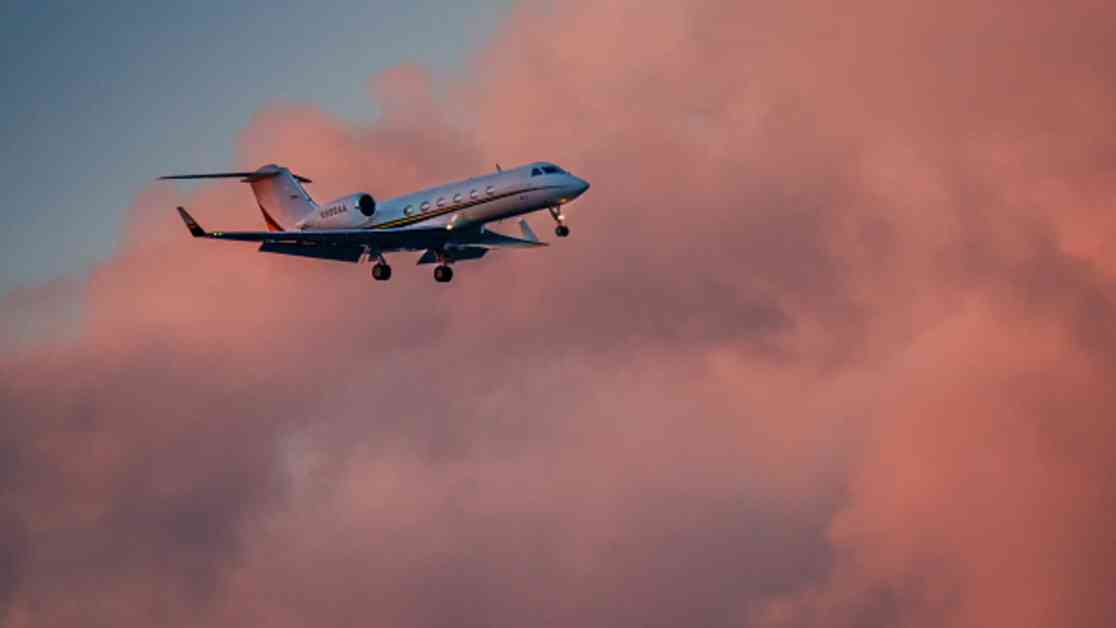Amid the ongoing challenges caused by the Covid-19 pandemic, the private jet industry has seen a significant decrease in flights, with a 15% drop in the first half of the year compared to its peak in 2022. This decline comes as the industry faces waning demand and a new competitive landscape for high-end travel.
The industry, which experienced a surge in new jet card members and charter fliers during the height of the pandemic, is now grappling with the reality that many of these travelers are returning to commercial flights. Rob Wiesenthal, CEO of Blade Air Mobility, noted, “During the peak, everyone was saying, ‘People who fly private for the first time will never go back to commercial.’ Well guess what? Many went back. And they’re still going back.”
Private jet charter flights dropped to 610,000 in the first half of the year, down from 645,000 last year and 716,000 in 2022, according to data from Argus International. This two-year decline highlights the ongoing correction in the world of private aviation, as even ultra-wealthy travelers show signs of spending fatigue.
The boom times of the post-Covid era created a wave of euphoria in the industry, leading to a burst of IPOs and startups, as well as a mad scramble for jets and pilots. Now, many experts believe that all this expansion is setting the stage for a shakeout in the industry.
Subheadings:
### Industry Challenges and Trends
The recent challenges and fleeting success in private aviation can be traced back to the Covid-19 pandemic. In 2020, as airports and airlines shut down, private jets offered an escape and a safer way to fly. Wealthy travelers who had rarely flown private due to the cost and energy consumption could now justify isolating at 40,000 feet.
“There was this whole section of the population that could afford to fly private, but they were always reluctant because they didn’t like the optics,” said Jay Duckson, founder and president of consulting firm Central Business Jets. “With Covid, they had a reason to fly private. You had a massive uptick in demand.”
The flood of liquidity from government spending, stimulus packages, low interest rates, and a booming stock market also created record amounts of wealth to pay for the soaring costs of flying private. Companies rushed to buy planes, hire pilots, and sign up new members. Before 2019, there were only a few months where private jet charters topped 100,000. In 2021, almost every month exceeded 100,000 flights, with July 2021 topping 300,000 flights.
The demand overwhelmed the industry, leading to delays and cancellations as operators couldn’t acquire planes or lease them fast enough. Shortages of pilots and parts also grounded fleets. In 2023, demand started to slide even as more planes and pilots came online.
### Financial Challenges and Industry Shakeout
Some wealthy fliers felt they could no longer use Covid as an excuse to fly private, while others found the soaring prices simply too high. Private Jet Card Comparisons’ Doug Gollan noted, “Prices are about 20% higher than they were in 2019. A lot of people are saying, ‘I spent $300,000 or $350,000 on flights last year, I’m not going to spend $400,000 or $450,000 this year.’”
Along with reducing flights, some fliers started flying commercial for easy city-to-city trips, mixing both commercial and private travel throughout the year. Gollan’s survey of private jet fliers found that 87% “switch between airlines and private, depending on where they’re flying.”
With demand lower, unsold planes are piling up again, and prices are softening. The number of used business jets for sale jumped 17% in July compared to a year ago, with prices falling 7%. While orders for new jets remain strong, the wait times have decreased from three or four years to about two years for many models, according to jet brokers.
Industry executives see the drop in demand as a positive development, signaling a return to a more balanced equilibrium with profitable routes, available planes, and happier customers. Travis Kuhn, senior vice president of software at Argus, stated, “The industry is on a more sustainable long-term path. It’s not a bad thing that it’s cooled down a bit.”
### Resilience and Adaptation in the Industry
Despite the challenges, some industry giants like NetJets, owned by Berkshire Hathaway, have benefited from the shifting landscape. More people are switching from charter to fractional ownership due to better reliability and quality. The number of fractional flights actually increased 12% in the first half of 2024, reaching 308,000, according to Argus.
“Some of these new fliers looked around and assessed the market, and they like the fractional model,” Kuhn said. “It’s a set number of hours and a bigger fleet.”
The private jet industry continues to face uncertainties and evolving trends, but with resilience and adaptation, it may find a new equilibrium that meets the needs of both customers and operators alike. As the industry navigates these challenges, it remains to be seen how it will evolve in the coming years.






















